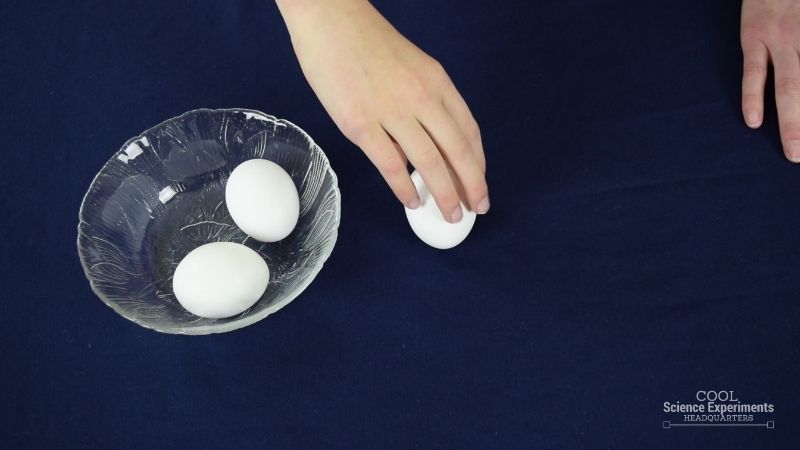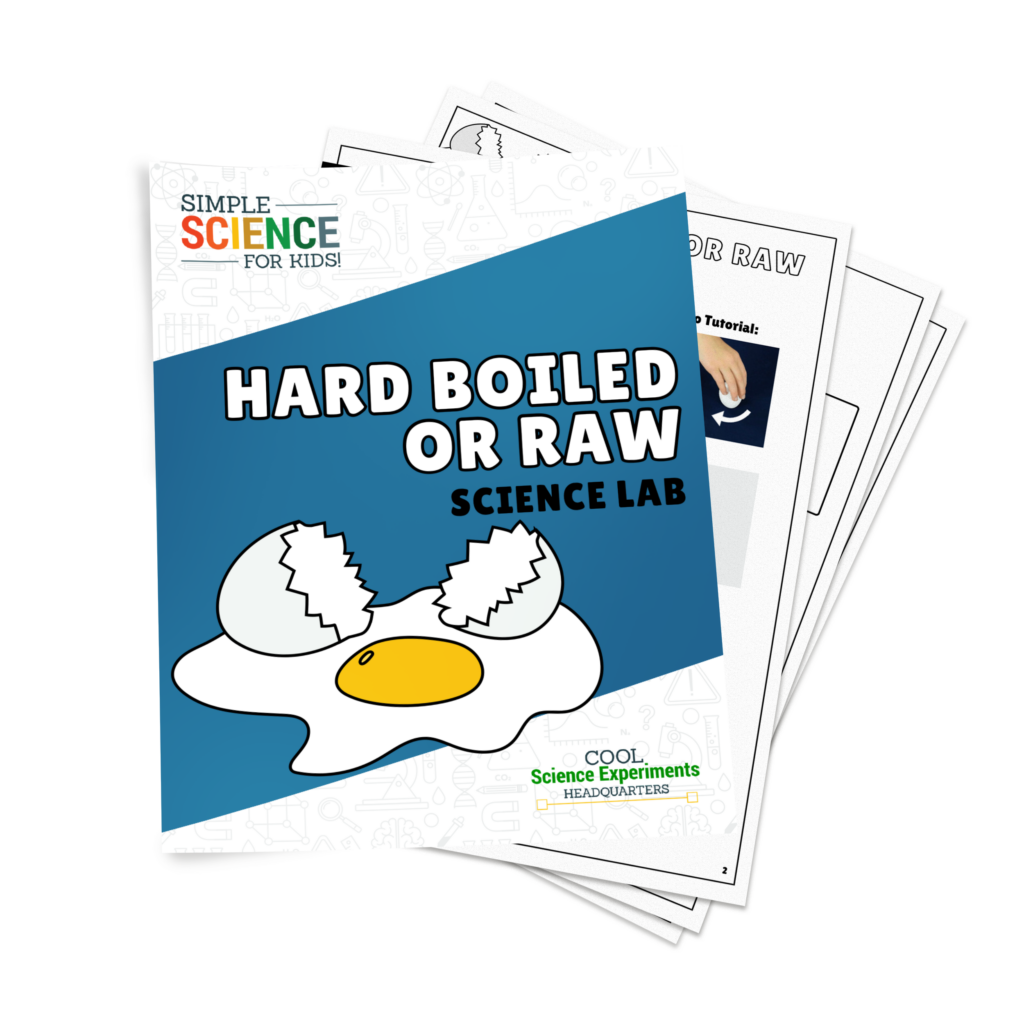Did you know that you can use science to determine if an egg is hard-boiled or raw without cracking the shell? It’s true! Just give the eggs a spin and observe what happens next!
In this easy science experiment, kids can make a hypothesis, observe inertia in action, and discover the science behind what makes it work.

Bonus, this experiment also comes in handy if you can’t remember which eggs in your fridge are hard-boiled and which ones aren’t!
JUMP TO SECTION: Instructions | Video Tutorial | How it Works | Purchase Lab Kit
Supplies Needed
- 2 Raw Eggs
- 1 Hard-Boiled Egg
Hard Boiled or Raw Science Lab Kit – Only $5
Use our easy Hard Boiled or Raw Science Lab Kit to grab your students’ attention without the stress of planning!
It’s everything you need to make science easy for teachers and fun for students — using inexpensive materials you probably already have in your storage closet!
iS The Egg Hard Boiled Science Experiment Instructions

Step 1 – Prepare a bowl of 3 eggs, 2 raw eggs, and 1 hard-boiled egg. Take a moment to make some observations about the eggs. Do they look the same? Do they feel the same? Can you notice any difference in the eggs? Take a moment to write down your observations.

Step 2 – Carefully take one egg out of the bowl and spin it on the table. Observe what happens. Does the egg continue to spin or does it stop spinning very quickly? Write down your findings.
Helpful Tip: It is important to spin the egg on a hard flat surface.

Step 3 – Next, repeat with the other two eggs. Observing and writing down the behavior each time. When you are finished review your observations. Did the eggs all behave the same? You probably noticed that one of the eggs behaved differently than the other two. This is the hard-boiled egg. Do you know why it behaved differently?
Find out the answer in the how does this experiment work section below.
Video Tutorial
Is the Egg Raw or Hard Boiled Science Experiment Step by Step Instructions
How Does the Science Experiment Work
While the two eggs look and feel the same, there is a big difference in what’s inside the eggs. Inside the raw egg, the egg white and egg yolk are fluid and can move around inside the shell. Inside the hard-boiled egg however, the egg white and egg yolk are solid and do not move around inside the shell.
When you spin the hard-boiled egg, everything moves together and the egg will continue in a smooth spinning motion. However, when you spin the raw egg, the fluid inside moves around and causes the egg to wobble.
When you try to stop the eggs from spinning by slightly touching them, the hard-boiled egg easily stops spinning, but the raw egg will keep turning a little bit. When you try to stop the raw egg, your touch stops the shell, but the fluid inside the egg continues to move, which causes the egg to remain spinning.
The raw egg’s resistance to stopping spinning is a great example of inertia. Inertia is the tendency of an object to resist a change in motion. The inertia of the raw egg is greater than the inertia of the hard-boiled egg. Inertia is the reason you keep moving forward when a vehicle stops suddenly.
Hard Boiled or Raw Science Lab Kit – Only $5
Use our easy Hard Boiled or Raw Science Lab Kit to grab your students’ attention without the stress of planning!
It’s everything you need to make science easy for teachers and fun for students — using inexpensive materials you probably already have in your storage closet!
More Science Fun
Enjoyed this egg-citing experiment? Then you’ll want to try your hand at these other egg science experiments.
- Egg in a Bottle – Use a little science magic to get the egg into the bottle without touching it.
- Floating Egg – Eggs naturally sink, but we make them float. Find out how and then give it a try.
- Bouncy Egg – Remove the shell from a raw egg and make it bounce!
I hope you enjoyed the experiment. Here are some printable instructions:


Hard Boiled Egg Science Experiment
Materials
- Two Raw Eggs
- One Hard Boiled Egg
Instructions
- Prepare a bowl of 3 eggs, 2 raw eggs and 1 hard boiled egg.
- Take one egg out of the bowl and spin it on the table. Observe what happens. Does the egg continue spin or does it stop? Helpful Tip: It is important to spin the egg on a hard flat surface.
- Next, repeat with the other two eggs. Observing the behavior each time. One of the eggs behaved differently than the other two. This is the hard boiled egg.


Leave a Reply